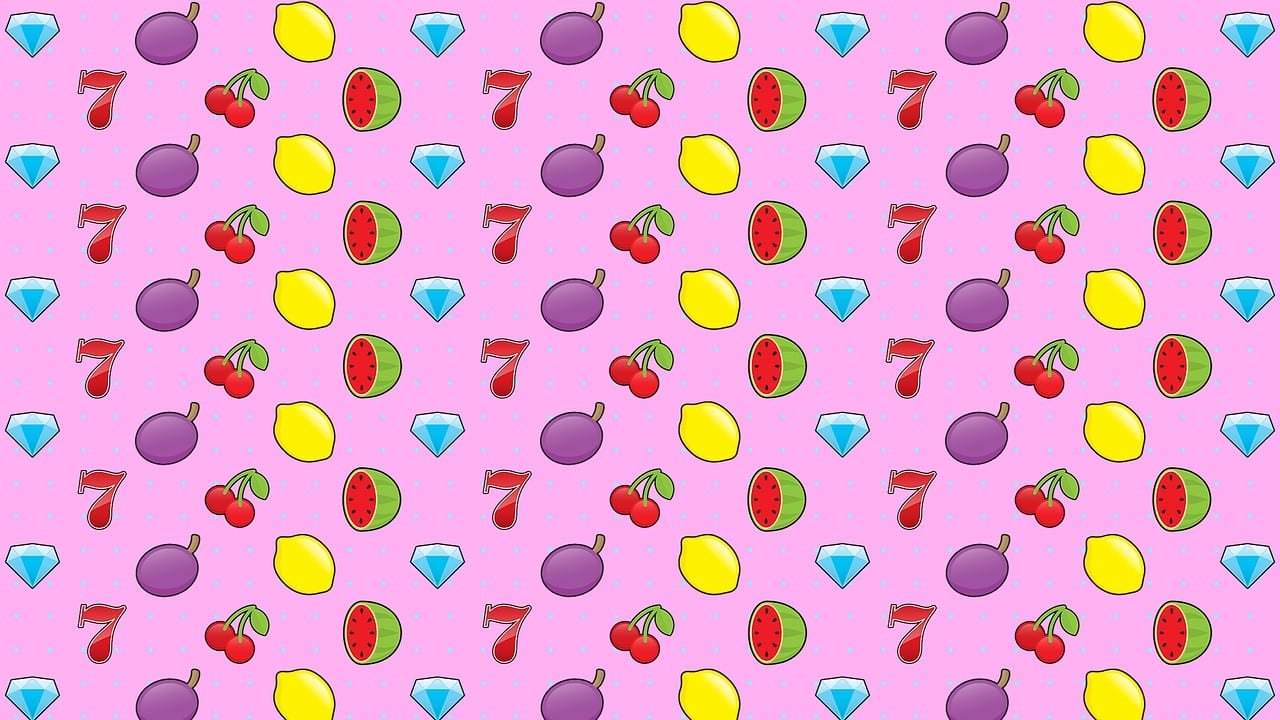Guide
The Evolution of Slot Machines – From Coins to Bitcoins
Published
3 days agoon
By
Alexander
Slots are, far and wide, the most popular casino game these days. They have always been stars in land-based casinos, where entire floors are dedicated to them. However, the digital era has breathed new life into the good old “one-armed bandit.” Typically, online casinos have hundreds, if not thousands, of slots with the most creative themes, graphics, and gameplay.
The first slot machine (Liberty Bell) is over 100 years old now, created in the late 19th century in the United States by Charles Fey. Naturally, there weren’t electronic devices in it, and the results were generated by a clever arrangement of physical reels with symbols painted on them. The luckiest players would bring home the bagatelle of 50 cents or 10 nickels.
Undoubtedly, Charles Fey would be very proud of what his invention has become. Here’s the evolution of slot machines, from coins to Bitcoins.
The Beginning
The original slot machine laid the blueprint for the protagonist of a USD 19.11 billion industry. It had a 3×3 grid with cast-iron reels, each with 10 symbols. Once the lever was pulled, these reels ran vertically and independently. Fey’s machines were a roaring and nearly instant success, making him rich while he rented them to bars and saloons for 50% of their profits.
The original machine is still on exhibition in Reno, Nevada, and digital versions can be easily found online. The return to player rate (RTP) was about 75%, with a 26% hit frequency. With no algorithms involved, these rates were guaranteed purely by mechanics. Still, they were crucial for the game’s success.
About RTP (and Why the House Always Wins)
The RTP is what makes the game commercially viable, ensuring the house always has its share. The concept remained core to the game in the subsequent developments. It was there in the 1960s, when the first video slots came out, and in the 1990s, with the first online casinos. Undeniably, digital technologies made slots more fun.
Free from the physical constraints of mechanical reels, the game gained many more titles, mind-boggling mechanics, and console-like animated features. More importantly, digital technologies have made the game much more transparent. Nowadays, each result is generated by RNG (random number generator) algorithms, ensuring the fairness of each round.
Simply put, the RTP percentage shows how much of the bets placed will be returned as prizes and jackpots. The remaining percentage, known as the “house edge,” is, in fact, the house’s profit. For instance, a slot machine with an RTP of 98% means that the house will keep 2% of all bets, regardless of eventual winners. So, even if a lucky player hits the highest jackpot, the house is still winning.
This percentage is calculated based on the result of thousands of spins. It’s a common mistake to believe that this percentage shows how much an individual player will get back, which couldn’t be further from the truth. There’s no way to tell how much an individual player will get back, or even whether they’ll win anything at all. Nevertheless, a high RTP rate remains attractive to players, as it potentially leads to more winning combinations.
RTP vs Hit Frequency
The word “potentially” in the last sentence isn’t occasional, as RTP and hit frequency aren’t necessarily connected. Hit frequency, as the name suggests, shows how often a winning combination is likely to land. Meanwhile, RTP refers to the total amount of bets. It’s possible to have a high RTP and a low hit frequency, for instance. In this case, prizes tend to be higher because they are distributed across fewer winning combinations. Conversely, games with high hit frequency rates tend to reward smaller prizes.
Provably Fair and the New Age of Transparency
It’s impossible to discuss the evolution of slots RTP without mentioning the rise of crypto casinos and, consequently, Provably Fair games. Provably Fair games emerged in the early 2010s alongside the first crypto casinos. Nowadays, it’s hard to find a crypto casino without such games.
Top brands like Bitcasino offer countless Provably Fair games, including slots, dice, roulette, crash games, and more. Indeed, this technology provides unprecedented levels of fairness and transparency. For starters, each result includes a “receipt” showing how it was calculated, which players can verify upon request. No traditional online casino allows such a thing.
Additionally, Provably Fair results are generated before the player hits “play” (unlike traditional games), making tampering impossible. In this system, each player receives a “player seed,” a unique string of characters. The player seed triggers a “server seed” that contains the outcome, which is revealed at the end of the round. The results are tagged with a “nonce” (a sequence of numbers starting from 0 or 1), ensuring each result is unique.
RNG and Provably Fair aren’t the same thing, but it’s fair to say that the latter is an evolution from the former. While licensing organizations rigorously test and certify RNG algorithms, only Provably Fair allows players to scrutinize the results. Single-handedly, it empowers players and platforms against fraud and scams, creating a trustworthy environment where transparency comes first.
Unsurprisingly, the crypto casino industry is skyrocketing, having generated a global revenue of USD 81 billion last year alone. In fact, it has grown by about 500% between 2019 and 2024. It caters to a long-standing demand for more player-centric and trustworthy games. For slots lovers, it’s the end of that burning question: Is this game really fair? Now, they can verify it by themselves.
Other Advantages
Unfortunately, a faulty internet connection is still a problem for many players, especially mobile players. Most Provably Fair games are available in Light mode, meaning that they require minimal connection. Meanwhile, transactions with cryptocurrencies are nearly instant, allowing players to enjoy their favourite games with little interruption. Born in the age of smartphones, these games take a mobile-first approach, not requiring a top-tier device to run.
The Future Is Fair
The future of online slots is the convergence of absolute reliability, high-end technology, and ever more innovative gameplay. Artificial intelligence and machine learning algorithms have already joined the game. They can “read” a player’s behaviour and preferences to tailor a unique experience to each one. Predictive algorithms, like those that suggest the next Netflix show, are also used to suggest new games based on players’ previous choices.
Slots are games of pure luck, but it no longer means that players can only hit “play” and hope for the best. There are several titles with mini-games and bonus rounds included, which can multiply the prize or burn it completely. Despite being a single-player game, it’s becoming much more interactive, with leaderboards, achievements, and competitions. Such features keep the gaming experience fresh, engaging, and social.
Simplistic designs are still around for those who like them, but the game’s graphics are getting much more advanced. 3D slots have been around for a while. So, the next step is towards virtual and augmented realities. These technologies, once reserved for cutting-edge consoles, are bound to bring the game to a whole new level. While VR headsets create fantastic and immersive worlds, AR glasses bring the action to the player’s living room, in a Pokémon Go-like sort of way.
The integration of blockchain, crypto assets, and casino games, which has been so successful so far, will deepen. There are many platforms already supporting a wide range of cryptocurrencies, allowing players to bet and earn in Ethereum or Bitcoin, for instance. Additionally, NFTs are slowly but surely gaining space among slots lovers.
The Trustworthy Spin
From the clinking mechanics of cast-iron reels to silent algorithms governing increasingly complex worlds, slots have been through lots. The core thrill remains the same, though: those gut-wrenching seconds while the reels are still spinning. However, digital technologies have completely changed their framework, greatly expanding the game’s possibilities.
For once, slot games can’t be rigged like they were in the past. Certified RNGs have done a tremendous job in keeping the game fair until a better technology emerged. The age-old question about the game’s integrity has been convincingly addressed, at last. Indeed, the one-armed bandit has left behind its days of bad reputation. It has become a trustworthy and sophisticated digital entertainer, handling a plethora of cryptocurrencies and even NFTs.
The integration with immersive technologies like VR and AR seems like a natural development for a game that’s constantly adapting. Charles Fey’s invention keeps spinning the crowds and will undoubtedly continue to do so for generations to come.
You may like


VisualGPT AI Background Changer: Effortlessly Transform Your Images for Any Occasion

What to Expect When You Rent a Private Jet

Why Water Aerobics Certification is a Game-Changer for Fitness Trainers

Why Some Commercial Buildings Cost Less to Maintain Long-Term

Understanding LiFePO4 Battery Technology and Its Role in Modern Energy Systems

Best Rolex Super Clone Websites – Top Rated and Verified

Vintage Gaming Washed Hoodies at NerdyWave: 2025 Black Friday Sale Deals

What Parents Are Learning About Roblox the Hard Way

Beyond the Lowball Offer: Public Adjuster Services That Maximize Your Claim

Discover the Best Face Paint in Australia: Creative Faces’ Ultimate Guide

Carol Kirkwood’s Journey: Her Real Age, Husband, Career, and More

Revolutionizing Healthcare: The Emergence of AI-Driven Analytics

How Machine Learning and AI are Redefining the Future?

Aliza Barber: Meet Lance Barber’s Wife, Age, Life, Profile, Career and Net Worth

Evelyn Melendez: Jordan Knight’s Wife Bio, Marriage, Family, Career and Net Worth

Ilan Tobianah Biography: Family, Marriage, Lifestyle, Career and Net Worth

Who was Alice Marrow? Everything to Know About Ice-T’s and His Mother

King Von’s Autopsy Report: The Truth Behind the Tragic Death

Meet Otelia Cox: The Supportive Wife of Tony Cox – A True Fairy Tale Romance

Tea Leoni and Tim Daly Split – A Closer Look at Their Relationship and Breakup

VisualGPT AI Background Changer: Effortlessly Transform Your Images for Any Occasion

What to Expect When You Rent a Private Jet

Why Water Aerobics Certification is a Game-Changer for Fitness Trainers

Why Some Commercial Buildings Cost Less to Maintain Long-Term

Understanding LiFePO4 Battery Technology and Its Role in Modern Energy Systems

Best Rolex Super Clone Websites – Top Rated and Verified

Vintage Gaming Washed Hoodies at NerdyWave: 2025 Black Friday Sale Deals

What Parents Are Learning About Roblox the Hard Way

Beyond the Lowball Offer: Public Adjuster Services That Maximize Your Claim

Discover the Best Face Paint in Australia: Creative Faces’ Ultimate Guide
Category
Trending
-

 News2 months ago
News2 months agoCarol Kirkwood’s Journey: Her Real Age, Husband, Career, and More
-

 Health2 years ago
Health2 years agoRevolutionizing Healthcare: The Emergence of AI-Driven Analytics
-

 Technology2 years ago
Technology2 years agoHow Machine Learning and AI are Redefining the Future?
-

 Celebrity2 years ago
Celebrity2 years agoAliza Barber: Meet Lance Barber’s Wife, Age, Life, Profile, Career and Net Worth
